- Joined
- 9 October 2009
- Messages
- 21,928
- Reaction score
- 13,541
Thread bumped.
Abraham Gubler said:[...]
This was a new turret designed by Wegmann in 1978 that reduced turret height by 30% that was to be combined with the Euro Pak engine which cut the hull length by a road wheel (1m). These volume reductions enabled a new mark of Leopard 2 to be built with much increased armour thickness but staying under 60 tonnes combat weight. Main gun depression to -10 degrees was to be allowed by a rising flap on the turret roof.
Source: Battle Tanks for the Bundeswehr: Modern German Tank Development, 1956-2000 by Rolf Hilmes, ARMOR — January-February 2001
fightingirish said:Abraham Gubler said:[...]
This was a new turret designed by Wegmann in 1978 that reduced turret height by 30% that was to be combined with the Euro Pak engine which cut the hull length by a road wheel (1m). These volume reductions enabled a new mark of Leopard 2 to be built with much increased armour thickness but staying under 60 tonnes combat weight. Main gun depression to -10 degrees was to be allowed by a rising flap on the turret roof.
Source: Battle Tanks for the Bundeswehr: Modern German Tank Development, 1956-2000 by Rolf Hilmes, ARMOR — January-February 2001
PDF: Battle Tanks for the Bundeswehr: Modern German Tank Development, 1956-2000 by Rolf Hilmes, ARMOR — January-February 2001

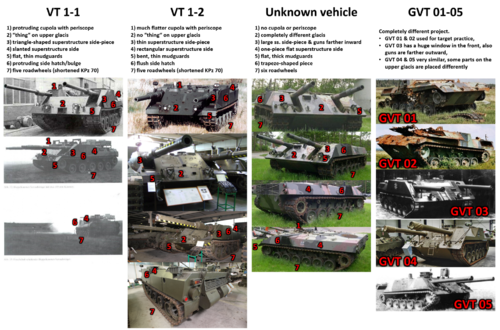
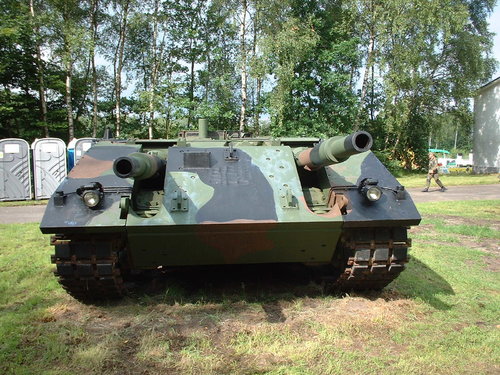


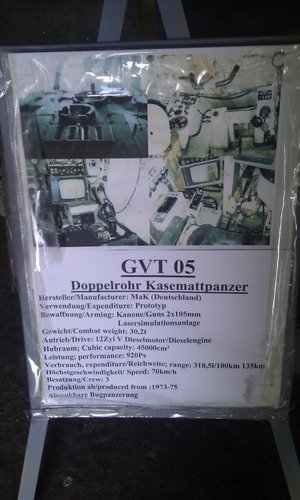
Could it be GTV-04 with an additional applique armored shell? (Possibly spaced armor?) The area around the barrels seems to show an extra thickness like a second glacis plate.


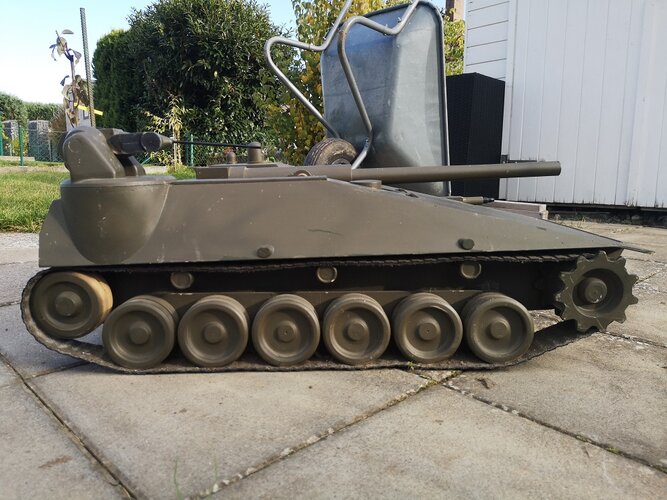




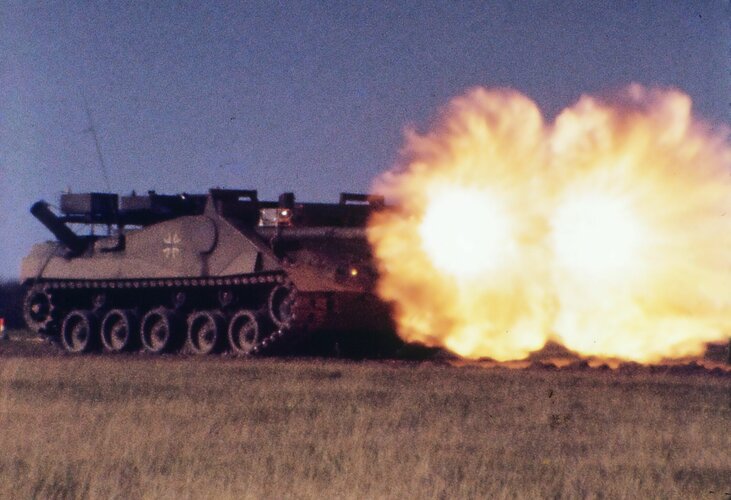
Hello from Frielendorf Nordhessen in Germany, I came across the forum by chance because I deal very intensively with the prototypes of the Bundeswehr. I myself was able to buy some original prototypes of the Bundeswehr by chance. Here is my collection in one picture.
View attachment 645214
View attachment 645215
View attachment 645216
View attachment 645217
In my collection there are, among others, Leopard 1 prototype of the pre-series, Leopard 2 prototype with 20mm gun and the PT11 Turret, two wheeled armored vehicles of the family of the Wildcat air defense system and an unknown tank destroyer that I once showed here!
Greetings from Frielendorf in Germany




Nice! Where did you find these?New info about KVT/HVT.
KVT for combined-engine testrig, and HVT for auxiliary-engine testrig.
View attachment 657163
This vehicle in 1972-73 tested an AIP propulsion system on a M41 modified chassis. It's got liquid air cylinder container, which is capable for 15min underwater operation. The large snorkel on driver's cabin is for crew escape, rather than supply air to the engine.
View attachment 657168
This vehicle got a MWM D 226-4 60kW diesel engine, driving through ZF 4HP340 transmission, but I assume that this is just a auxiliary power unit, while this 4HP340 transmission is capable for even large power than Leopard 1's 4HP250.
View attachment 657169
And this is what KVT/HVT is like today.
Meilensteine der Panzerentwicklung: Panzerkonzepte und BaugruppentechnologieNice! Where did you find these?New info about KVT/HVT.
KVT for combined-engine testrig, and HVT for auxiliary-engine testrig.
View attachment 657163
This vehicle in 1972-73 tested an AIP propulsion system on a M41 modified chassis. It's got liquid air cylinder container, which is capable for 15min underwater operation. The large snorkel on driver's cabin is for crew escape, rather than supply air to the engine.
View attachment 657168
This vehicle got a MWM D 226-4 60kW diesel engine, driving through ZF 4HP340 transmission, but I assume that this is just a auxiliary power unit, while this 4HP340 transmission is capable for even large power than Leopard 1's 4HP250.
View attachment 657169
And this is what KVT/HVT is like today.
These guns are controlled via the principle called ERNA, which is short of Entkoppelten Richt und Nachführantriebe, translating as Decoupled Aiming and Tracking Drive.Wouldn't those side by side guns be hard to aim?

Well, how would you explain these M41 chassis testbeds with similar vehicle front?Just a clue and a translation of the description of those photos of the remotely controlled M-41:
First photo
"Test vehicle, self-constructed by the armed forces, this former light tank M-41, with the turret for its 76,2 mm
gun removed. This modification is an attempt to control the vehicle by radio (note the rod aerial) to use it for
different tasks, e.g. detecting and clearing mines. Unfortunately, more specific information cannot be given."
The wording of the last sentence, to my opinion, makes clear, that those tests were classified.
Second photo
"The remotely controlled vehicle from the rear. The cladded engine cover and the mounting for the antenna are
clearly visible. The tests were conducted by the WTD 81 in Greding [Wehrtechnische Dienststelle = department for
defence technology] )
No mention of counterweights, no "big" engine compartment (it just seems to have got an additional cover), and principally,
not even the purpose of mineclearing is confirmed, it's just mentioned as a role for remotely controlled vehicles in general.
And of cousre, as dan-inbox said, no relation to casemate tanks!






